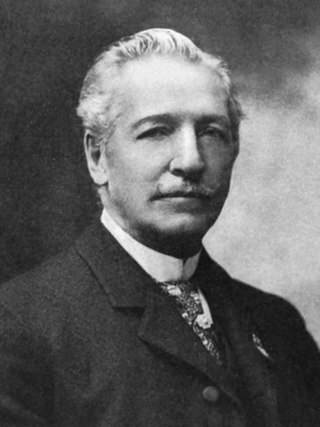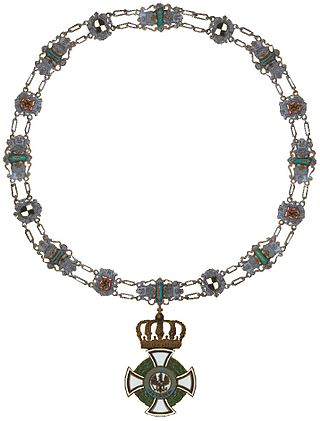
Embroidery is the craft of decorating fabric or other materials using a needle to apply thread or yarn. Embroidery may also incorporate other materials such as pearls, beads, quills, and sequins. In modern days, embroidery is usually seen on caps, hats, coats, overlays, blankets, dress shirts, denim, dresses, stockings, scarfs, and golf shirts. Embroidery is available in a wide variety of thread or yarn colour. It is often used to personalize gifts or clothing items.

Carl Friedrich Benz, was a German engine designer and automotive engineer. His Benz Patent Motorcar from 1885 is considered the first practical modern automobile and first car put into series production. He received a patent for the motorcar in 1886.

Singer Corporation is an American manufacturer of consumer sewing machines, first established as I. M. Singer & Co. in 1851 by Isaac M. Singer with New York lawyer Edward C. Clark. Best known for its sewing machines, it was renamed Singer Manufacturing Company in 1865, then the Singer Company in 1963. It is based in La Vergne, Tennessee, near Nashville. Its first large factory for mass production was built in 1863 in Elizabeth, New Jersey.

Charles Ethan Billings (1834–1920) was an American mechanical engineer, inventor, superintendent, and businessman. He held various U.S. patents on hand tools, either assigned or licensed to the firm that he and Christopher M. Spencer cofounded, the Billings & Spencer Company. His name as patent holder is stamped on countless forged hand tools, many of which survive. Billings was an expert in drop forging and was an influential leader in the American system of manufacturing and its successor systems of mass production for firearms, sewing machines, hand tools, bicycles, and other goods. He served as president of the American Society of Mechanical Engineers in 1895 and 1896. The Billings & Spencer Company was both a machine tool builder and a manufacturer of hand tools made with its machine tools.

Riedel Crystal is a glassware manufacturer based in Kufstein, Austria, best known for its glassware designed to enhance different types of wines. According to Petr Novy, Chief curator Museum of Glass and Jewellery in Jablonec nad Nisou Czech Republic, Riedel is the oldest family owned and operated global crystal glass brand worldwide. Established in Bohemia in 1756, the company is managed by Georg Riedel and Maximilian Riedel.
Bernina International AG is a privately owned international manufacturer of sewing and embroidery systems. The company was founded in Steckborn, Switzerland, by a Swiss inventor Fritz Gegauf. The company develops, manufactures, and sells goods and services for the textile market, primarily household sewing-related products in the fields of embroidery, quilting, home textiles, garment sewing, and crafting. The origins of the company lie in the invention of the hemstitch sewing machine, invented in 1893 by a Swiss inventor and entrepreneur Karl Friedrich Gegauf. Currently, the company's products include sewing machines, embroidery machines, serger/overlocker machines, and computer software for embroidery design.
PFAFF is a German manufacturer of sewing machines and is now owned by the SGSB Co. Ltd.

Steckborn is a municipality in Frauenfeld District in the canton of Thurgau in Switzerland.

The House Order of Hohenzollern was a dynastic order of knighthood of the House of Hohenzollern awarded to military commissioned officers and civilians of comparable status. Associated with the various versions of the order were crosses and medals which could be awarded to lower-ranking soldiers and civilians.

Helen Augusta Blanchard was an American inventor who received 28 patents between 1873 and 1915. She was known for her numerous inventions dealing with sewing machines and sewing technology.

Fritz Gegauf (1893-1980) was a Swiss inventor and founder of the Bernina International, an international manufacturer of sewing and embroidery systems. He was the son of Karl Friedrich Gegauf (1860-1926), inventor of the hemstitch sewing machine.

An embroidered patch, also known as a cloth badge, is a piece of embroidery which is created by using a fabric backing and thread. The art of making embroidered patches is an old tradition and was originally done by hand. During the first half of the twentieth century they were commonly embroidered using a shiffli embroidery machine. High-speed, computerized machines have led to mass production.

St. Gallen embroidery, sometimes known as Swiss embroidery, is embroidery from the city and the region of St. Gallen, Switzerland. The region was once the largest and most important export area for embroidery. Around 1910, its embroidery production was the largest export branch of the Swiss economy with 18 percent of the overall export value. More than 50 percent of the world production came from St. Gallen. With the advent of the First World War, the demand for the luxury dropped suddenly and significantly and so a lot of people were unemployed, which resulted in the biggest economic crisis in the region. Today, the embroidery industry has somewhat recovered, but it will probably never again reach its former size. Nevertheless, the St. Galler Spitzen are still very popular as a raw material for expensive haute couture creations in Paris and count among the most famous textiles in the world.

Georg Adolf Carl von Opel, known as Georg Adolf Carl Opel before being ennobled in 1918, was a bank specialist and industrialist of the Opel family and one of the founders of the German automobile manufacturer Opel.

Johann Georg Rauch was a Swiss businessman and politician.













